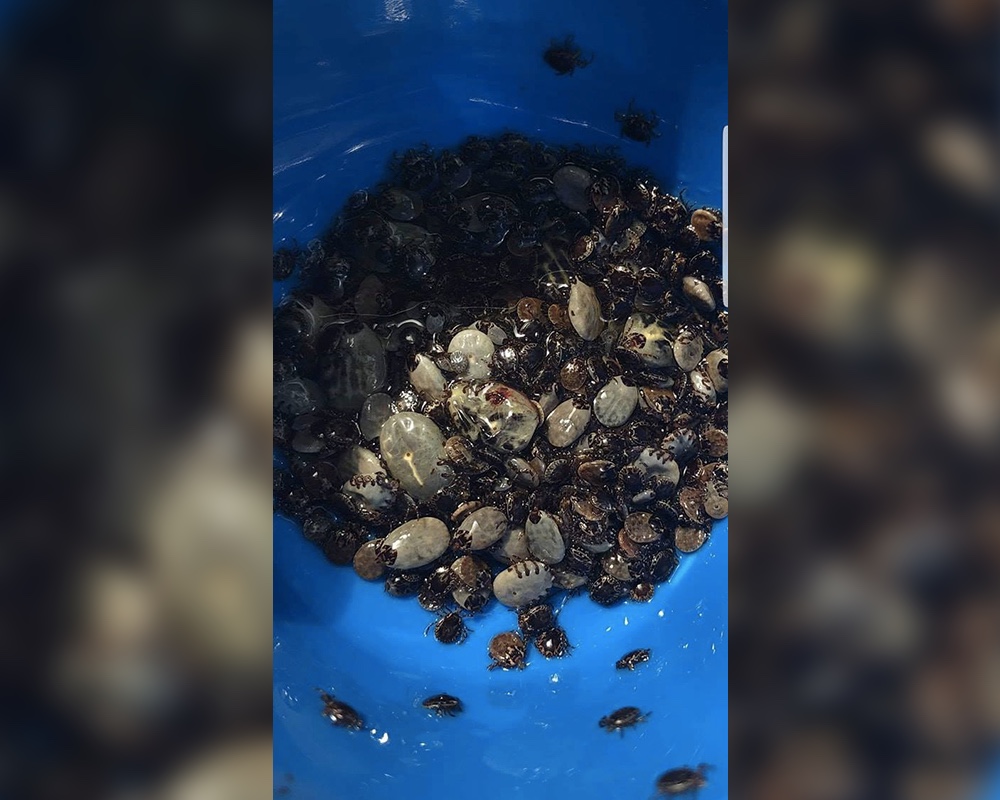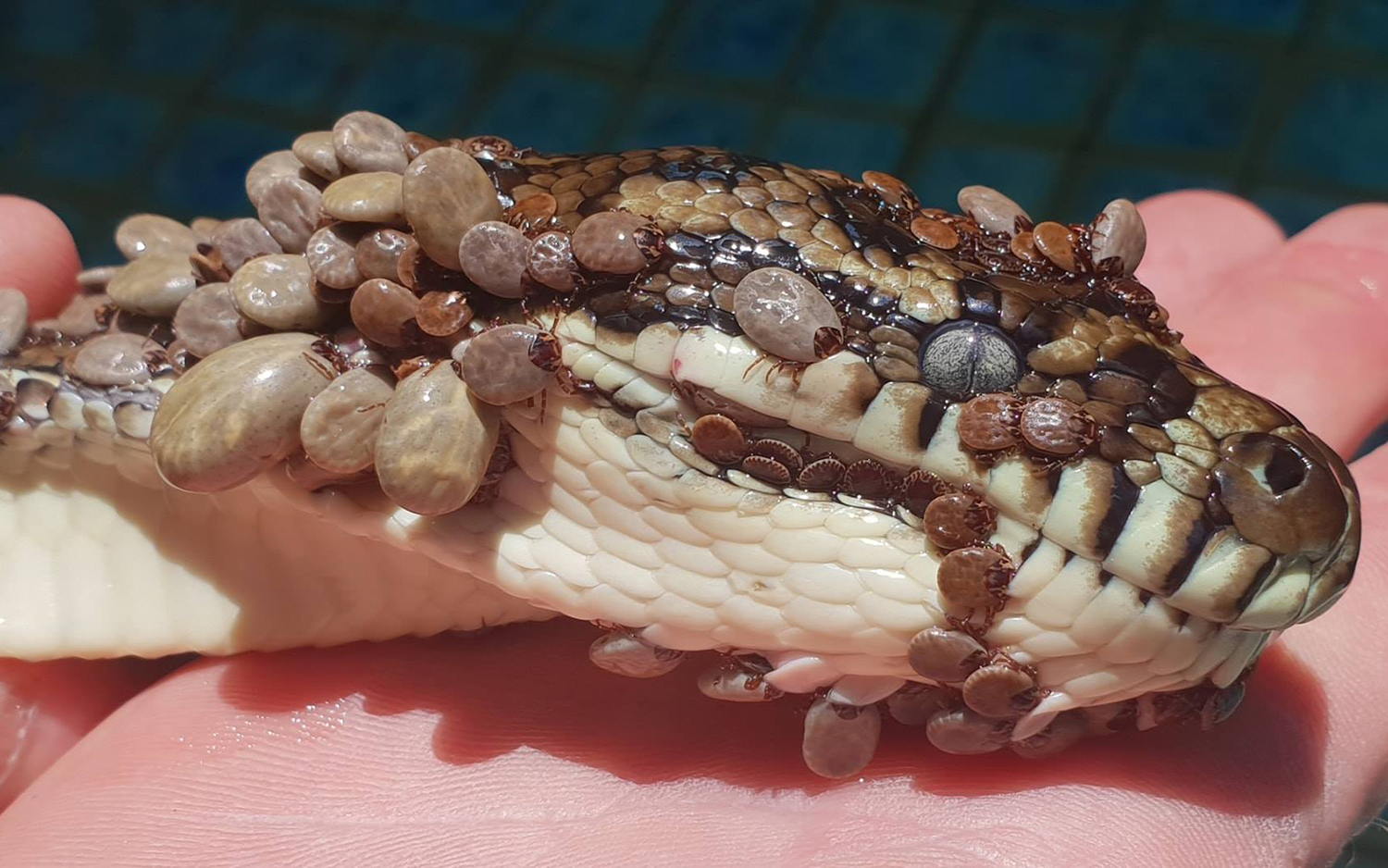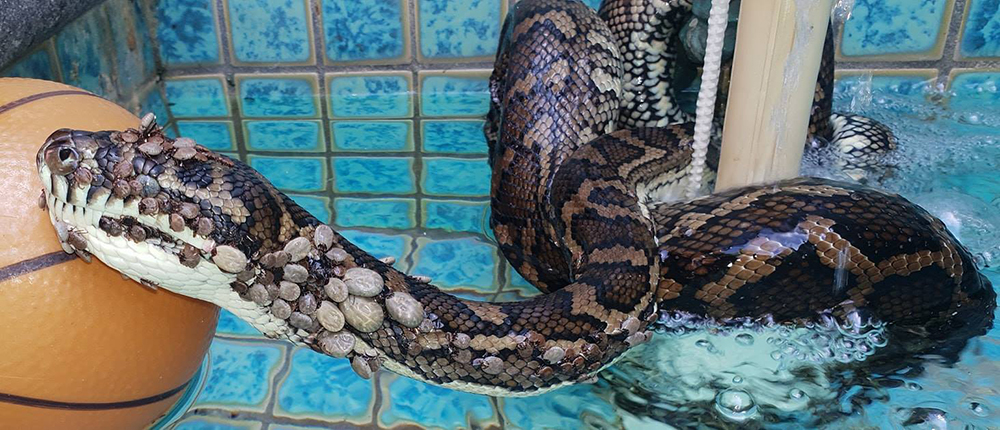So Many Ticks Were Feasting on This Unlucky Python, They Looked Like Living Scales
When Tony Harrison with Gold Coast and Brisbane Snake Catcher attempted to retrieve the snake from a swimming pool, he noticed that the partly submerged serpent was blanketed in more ticks than Harrison could count, he said on Jan. 9 in a post shared on Facebook.
"I figured it to be at least a couple hundred," he said on Jan. 10 in a Facebook video.
Harrison brought the snake to Currumbin Wildlife Hospital Foundation in Queensland, where 511 ticks were removed from the python's body. The snake, dubbed Nike, was finally pronounced tick-free on Jan. 12, but was still "very unwell" with anemia, hospital representatives wrote on Facebook. [8 Awful Parasite Infections That Will Make Your Skin Crawl]

Before his visit to the hospital, Nike was in a bad way. Clusters of ticks studded the python's head and body; some were small and flattened, while others were swollen and bloated with blood. It was a parasitic infestation the likes of which Harrison had never seen in 26 years of snake catching, according to the Facebook post.
Ticks are often associated with mammals; but snakes and other reptiles are frequently parasitized by these bloodsucking arthropods, Rebecca Trout Fryxell, an assistant professor in the Department of Entomology and Plant Pathology at the University of Tennessee Institute of Agriculture, told Live Science in an email.
In fact, a recent survey of nearly 2,000 wild Australian snakes found that 30 percent of them carried ticks, and that ticks were more common in woodland habitats, researchers reported in February 2018 in the journal Austral Ecology.
Size differences in the ticks infesting Nike represented different sexes and life stages, "and the amount of blood consumed by the tick," Fryxell explained. For example, a well-fed adult female tick is substantially bigger than a larval tick that has yet to consume a blood meal, she said.
Sign up for the Live Science daily newsletter now
Get the world’s most fascinating discoveries delivered straight to your inbox.

An extreme infestation such as this likely happened because the snake was already sick, likely with a compromised immune system, Emily Taylor, a professor of biological sciences at California Polytechnic State University, told Live Science. When a tick bites an animal and injects anticoagulants from its saliva, the animal sets off an immune response that can kill the tick or slow down its feeding. However, if an animal's immune response is dampened, "you may see a greater number of ticks feeding or concluding their feeding," Taylor said.
And sated female ticks can lay thousands of eggs. If the eggs are fertilized, this can blanket the host with more hungry mouths to feed, Fryxell said.
Though bites from a few ticks usually won't hurt an animal too much, blood loss caused by hundreds of them at a time could be fatal — especially if an animal is already sick, Taylor explained.
"It's a bad sign in general when an animal has that many parasites on it," she said.

Because Nike was found in a pool, Harrison speculated on Facebook that the snake was trying to drown the ticks; however, this behavior has never been documented in snakes, Taylor said.
Then again, "nature works in weird ways," she added. "It could be that, having all those ticks on it kind of instinctively activated the animal to go and seek water," Taylor said. "Or it could have just been a coincidence. We have no real way of knowing."
For now, Nike is still resting at the wildlife facility, while doctors work to clear up "a nasty infection" that may have immobilized him and allowed the ticks to make their move, hospital representatives reported on Facebook. They are hopeful that he will recover completely and return to the wild in the coming months.
- Images: Human Parasites Under the Microscope
- The 10 Most Diabolical and Disgusting Parasites
- Bloodsuckers! Michigan Ticks and Larvae, In Photos
Originally published on Live Science.

Mindy Weisberger is an editor at Scholastic and a former Live Science channel editor and senior writer. She has reported on general science, covering climate change, paleontology, biology and space. Mindy studied film at Columbia University; prior to Live Science she produced, wrote and directed media for the American Museum of Natural History in New York City. Her videos about dinosaurs, astrophysics, biodiversity and evolution appear in museums and science centers worldwide, earning awards such as the CINE Golden Eagle and the Communicator Award of Excellence. Her writing has also appeared in Scientific American, The Washington Post and How It Works Magazine. Her book "Rise of the Zombie Bugs: The Surprising Science of Parasitic Mind Control" will be published in spring 2025 by Johns Hopkins University Press.









